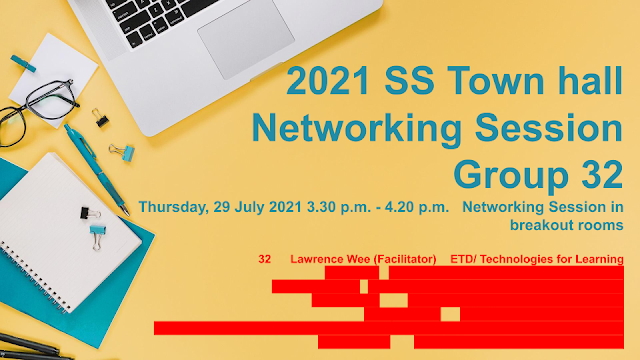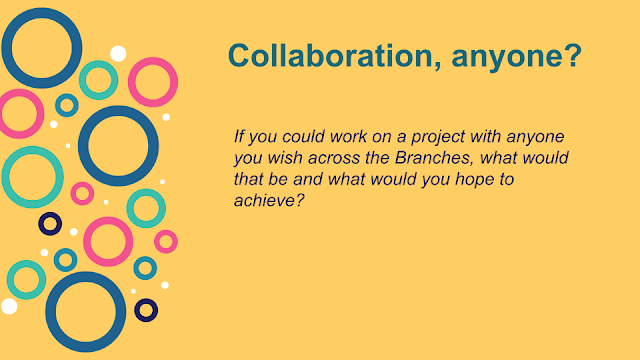Overview:
This document provides a briefing on the content and themes evident in the webpage of "Open Educational Resources / Open Source Physics @ Singapore" (OER/OSP@SG). The webpage serves as a repository and showcase of open educational resources, primarily interactive simulations and applets, focused on physics and mathematics education in Singapore. The content highlights a strong emphasis on utilizing open-source tools and collaborative platforms to create and share engaging learning experiences for students of various levels, particularly primary and secondary education. The webpage also documents various workshops, talks, and projects related to the development and implementation of these resources.
Main Themes and Important Ideas/Facts:
- Extensive Collection of Interactive Simulations and Applets: The core of the webpage is a vast and diverse collection of interactive JavaScript and HTML5 simulations and applets covering a wide range of physics and mathematics topics. These resources appear to be the primary output of the OER/OSP@SG initiative. Examples include:
- Physics: "Newton's Law of Motion 2021 JavaScript HTML5 Applet Simulation Model," "Beam Torque and Forces Simulation using Gemini Pro 2.5, Trae.ai, and DeepSeek-V2-0324," "Light Reflecting Off an Object and Into Eyes Javascript HTML5 Applet."
- Mathematics: "Find the area of the green region for Right-angled Triangle and General Triangle JavaScript Simulation Applet HTML5," "Counting Money using 5c, 10c, 20c, 50c and $1 coins for Primary Math JavaScript Simulation Applet HTML5," "Perimeter and Area Builder Click Lines to Form Shape for Primary 1 HTML5 Simulation by Theresa."
- Interdisciplinary: "4 Body Systems: skeletal, circulatory-respiratory, nervous and digestive system, drag and drop game," "🌿Transpiration Virtual Lab with 9 Plants ... Under 4 Conditions."
- Focus on Open Source Tools and Platforms: The initiative heavily utilizes open-source tools like the "Easy Java/JavaScript Simulations Toolkit (EjsS)" and platforms like GitHub (implied through shared project links and mentions of web editors). The mention of the "EJSS Sim Web Editor" (https://ejss-browser-editor.herokuapp.com/) and steps for customization (https://sg.iwant2study.org/ospsg/index.php/related-sites/959-ejss-sim-web-editor) clearly indicates the use and promotion of such tools for creating interactive content. The licensing information at the bottom of the page explicitly states: "Contents are licensed Creative Commons Attribution-Share Alike 4.0 Singapore License . Separately, for commercial use of EasyJavaScriptSimulations Library, please read https://www.um.es/fem/EjsWiki/Main/EJSLicense and contact This email address is being protected from spambots. You need JavaScript enabled to view it. directly."
- Collaboration and Sharing: The webpage features mentions of networking sessions ("20210729 Senior Specialist Town hall Networking Session, Group 32") and encourages collaboration ("Want to collaborate? Email me!"). The sharing of specific projects ("Shared https://sg.iwant2study.org/ospsg/index.php/projects/449-sstrf-2017Fraction app") and links to related sites suggests a community-driven effort focused on sharing and building upon existing resources.
- Integration with Singaporean Educational Context: Many of the simulations and activities appear tailored for the Singaporean curriculum, with mentions of "Primary Math," "Lower Secondary Science," and even specific local examination questions ("2019 PSLE Question on finding Diameter," "Board Game with automove P1 Math SA1 ACS Pri and Ai Tong Pri 2018 JavaScript Simulation Applet HTML5"). The involvement in events like the "TCEF2021: Teachers' Conference and ExCEL Fest 2021 CPDD-ETD" and the "Singapore Young Physicists' Tournament (SYPT)" further roots the initiative within the Singaporean education landscape.
- Exploration of Innovative Pedagogies and Technologies: The webpage showcases the adoption of emerging technologies like AI ("🧠 How I Used Gemini Pro 2.5 to Build “Allowance Adventure!”," "Surprising interactive is made in 2 prompts under 10 minutes : Revolutionizing Interactive Content Creation with AI, G1 Science Example") and explores pedagogical approaches like Inquiry Based Learning ("E-Pedagogy Conference 'Be Puzzled' Crafting Inquiry Based Lessons (IBL) using EdPuzzle by Syed Ali"). The use of phones as scientific equipment ("Promoting Joy of Learning by Turning phone into scientific equipment") is also highlighted.
- Focus on Various Levels of Education: While a significant portion of the resources seems geared towards primary and secondary education, there are also examples relevant to higher levels, such as "A Level Chemical Bonding Dot and Cross Diagrams JavaScript Simulation Applet HTML5" and projects related to the Singapore Young Physicists' Tournament.
- Documentation of Events and Projects: The webpage serves as an archive of various events, workshops, and projects related to OER/OSP@SG. This includes dates, titles, and sometimes brief descriptions, providing a historical record of the initiative's activities. Examples include "20210127 1st Physics Chapter Core Team Meeting" and "SSTRF_2020_ETD_03 Designing Interactive e-Assessment Test Items using Open Source Tools Senior Specialist Track Research Fund 2020."
- Recognition and Awards: The initiative has received recognition, as indicated by the mention of the "2020 Excellence in Physics Education Award from American Physical Society goes to Open Source Physics Team" and various "Innergy Awards" for innovative projects.
- Broad Range of Subject Areas: While the name emphasizes physics, the resources cover a broader range of subjects including mathematics, chemistry, biology (e.g., "4 Body Systems," "Transpiration Virtual Lab," "Food Web of Sungei Buloh"), and even language arts (e.g., "🐉Shoot the simile and metaphor dragons HTML5 game," "Malay Shoot the Zombie Sentence Game Imbuhan").
- Integration with Learning Management Systems: The mention of "SLS" (Student Learning Space, a national e-learning platform in Singapore) in many of the resource titles (e.g., "⚛️SLS Bohr's Theory of the Hydrogen Atom JavaScript Simulation Applet HTML5") indicates a deliberate effort to integrate these open educational resources into the national learning infrastructure.
Key Quotes:
- "Want to collaborate? Email me!" - This call to action highlights the collaborative nature of the initiative.
- The various titles of the simulations and applets themselves serve as descriptive quotes of the resources available (e.g., "🔥Measuring the Heat Energy Between 2 Cups of Water Javascript HTML5 Applet," "📏How to measure length of a pencil, shoe, scissors JavaScript HTML5 Applet Simulation Model by Theresa").
- The licensing information explicitly states the open nature of the content under the Creative Commons license.
- Mentions of specific tools like "Easy Java/JavaScript Simulations Toolkit" and platforms like the "EJSS Sim Web Editor" emphasize the technological foundation of the resources.
Conclusion:
The "Open Educational Resources / Open Source Physics @ Singapore" webpage demonstrates a vibrant and active community dedicated to creating and sharing interactive educational resources, primarily in physics and mathematics, using open-source tools. The initiative is deeply embedded within the Singaporean educational context, catering to various levels of schooling and integrating with national learning platforms. The emphasis on collaboration, innovation in pedagogy and technology, and the wide range of available resources make this a valuable hub for educators and learners seeking engaging and accessible educational materials.
Open Educational Resources / Open Source Physics @ Singapore Study Guide
Quiz
- What is the primary focus of the resources listed under "Open Educational Resources / Open Source Physics @ Singapore"?
- Based on the titles, what are some of the subject areas covered by the interactive simulations and applets? Provide at least two distinct examples.
- What is indicated by the numerous entries starting with "SLS"? What might SLS stand for in this context?
- Identify at least two different types of interactive learning tools or formats present in the listed resources.
- Who are some of the apparent contributors or developers of these open educational resources, based on the naming conventions in the titles?
- What do the "Breadcrumbs" at the top of the page indicate about the user's location within the website?
- What is the purpose of the "Popular Tags" section? Provide an example of a frequently accessed topic.
- What information is provided regarding the licensing of the content on this website?
- Describe the nature of the events or sessions listed, such as "20210729 Senior Specialist Town hall Networking Session."
- What evidence suggests collaboration or sharing among educators and developers regarding these resources?
Answer Key
- The primary focus is on providing open educational resources, specifically interactive simulations and applets, for learning and teaching, particularly in science and mathematics.
- Examples of subject areas include physics (e.g., Newtonian Mechanics, Light, Energy), mathematics (e.g., Fractions, Area and Perimeter, Whole Numbers), and chemistry (e.g., Chemical Bonding, Organic Chemistry).
- "SLS" likely stands for Singapore Student Learning Space, indicating resources specifically designed or integrated with this national educational platform.
- Different types of interactive learning tools include JavaScript/HTML5 simulation applets, drag-and-drop games, virtual labs, interactive flowcharts, and customizable board game templates.
- Contributors or developers appear to include Theresa, Darren Z Tan, Boon Chien, Lam MH, Luo Kangshun Andy, and organizations like Easy Java/JavaScript Simulations Toolkit and Open Source Physics Team.
- The "Breadcrumbs" indicate that the user is currently on the homepage, specifically within the section for the "20210729 Senior Specialist Town hall Networking Session, Group 32."
- The "Popular Tags" section highlights frequently accessed topics or keywords associated with the resources on the website, such as "Primary," "Light," and "Newtonian Mechanics."
- The content is licensed under the Creative Commons Attribution-Share Alike 4.0 Singapore License for non-commercial use, with a separate license and contact information provided for commercial use of the EasyJavaScriptSimulations Library.
- The listed events or sessions appear to be workshops, talks, networking sessions, and conferences aimed at educators and specialists to share and discuss the use and development of educational resources.
- The presence of shared links, collaboration requests (e.g., "Want to collaborate? Email me!"), and mentions of teacher conferences and hackathons suggest active sharing and collaboration within the community.
Essay Format Questions
- Discuss the potential benefits and challenges of using open educational resources like the ones listed for teaching and learning in Singapore's educational context.
- Analyze the range of subjects and educational levels that appear to be supported by the "Open Educational Resources / Open Source Physics @ Singapore" collection. Provide specific examples from the list to support your analysis.
- Evaluate the role of interactive simulations and applets in enhancing student engagement and understanding in science and mathematics education, drawing upon the examples provided in the source.
- Based on the listed activities and events, describe the community of educators and developers that seems to be associated with the "Open Educational Resources / Open Source Physics @ Singapore" initiative. What are their apparent goals and activities?
- Explore the significance of the licensing information provided for these resources (Creative Commons and EJSLicense). How does open licensing impact the accessibility and potential use of these materials by educators and learners?
Glossary of Key Terms
- Open Educational Resources (OER): Teaching, learning, and research materials that are available freely online for anyone to use, adapt, and share, with no or limited restrictions.
- Open Source Physics (OSP): A project focused on creating and disseminating free and open-source computational tools and resources for physics education.
- JavaScript: A high-level, often just-in-time compiled programming language that conforms to the ECMAScript specification, commonly used to make web pages interactive.
- HTML5: The latest evolution of the standard that defines the structure and content of the World Wide Web, enabling multimedia and interactive elements without the need for plugins.
- Simulation Applet: A small, self-contained program, often written in JavaScript and embedded in a webpage, that models a real-world phenomenon or concept, allowing users to interact with it.
- Interactive Learning Tool: A resource that allows users to actively engage with the content, often through manipulation, exploration, and immediate feedback, to facilitate learning.
- Singapore Student Learning Space (SLS): A national online learning platform in Singapore that provides students with access to digital learning resources and tools.
- Creative Commons License: A public copyright license that enables the free distribution of an otherwise copyrighted work, used when the author wants to give people the right to share, use, and build upon their work.
- Ejs (Easy Java/JavaScript Simulations): A free authoring tool that allows educators and students to create interactive simulations in Java or JavaScript without extensive programming knowledge.
- CPDD-ETD: Likely refers to Continuing Professional Development Division - Educational Technology Division, an entity involved in teacher training and educational technology in Singapore.
2021 Senior Specialist Town hall Networking Session, Group 32
Thursday, 29 July 2021 3.30 p.m. - 4.20 p.m.
 |
 |
| Shared https://sg.iwant2study.org/ospsg/index.php/projects/449-sstrf-2017 Fraction app |
 |
| Shared https://ejss-browser-editor.herokuapp.com/ game board customization Steps https://sg.iwant2study.org/ospsg/index.php/related-sites/959-ejss-sim-web-editor |
Frequently Asked Questions about Open Educational Resources / Open Source Physics @ Singapore
1. What is the primary focus of the "Open Educational Resources / Open Source Physics @ Singapore" initiative? This initiative centers on the creation, sharing, and utilization of open educational resources (OER) and open-source tools, particularly in the realm of physics and other STEM subjects, for educational purposes in Singapore. It aims to enhance teaching and learning through freely accessible and modifiable materials.
2. What types of resources are available through this initiative? A wide variety of interactive simulations, applets, games, and learning activities are available. These resources cover topics ranging from basic primary school math and science concepts (like counting money, volume, shapes, and simple mechanics) to more advanced high school and potentially introductory university-level physics and chemistry (such as Newtonian mechanics, chemical bonding, electromagnetism, and thermodynamics). There are also tools and templates for creating interactive content and even resources for language learning.
3. Who is the target audience for these open educational resources? The resources appear to be designed for a broad audience, including primary and secondary school students and teachers in Singapore. The content ranges from simple games for younger learners to more complex simulations suitable for older students. There is also evidence of engagement with teacher professional development and research initiatives, suggesting the resources are also valuable for educators seeking innovative teaching methods and tools.
4. What is the role of open-source software in this initiative? Open-source software, particularly the Easy Java/JavaScript Simulations (Ejs) toolkit, plays a crucial role in the development and deployment of many of the interactive simulations and applets. The use of open-source tools allows for the free distribution, modification, and adaptation of these educational resources, fostering collaboration and innovation within the educational community.
5. How can educators and learners access and utilize these resources? The main access point appears to be the website https://sg.iwant2study.org/ospsg/. From this central hub, users can browse and directly interact with the various simulations and learning activities. The platform also seems to host links to related sites and tools, as well as information about events and workshops related to OER and open-source physics education in Singapore.
6. How does this initiative encourage collaboration and sharing among educators? The platform encourages collaboration by providing contact information (an email address) for those interested in working together. The sharing of resources at workshops and through the website itself also fosters a collaborative environment. Furthermore, the use of open educational resource licenses (Creative Commons Attribution-Share Alike 4.0 Singapore License) explicitly permits the sharing and adaptation of materials, provided attribution is given and any derivative works are shared under a similar license.
7. Are there examples of innovative pedagogical approaches or technologies being explored within this initiative? Yes, the initiative explores various innovative pedagogical approaches and technologies. Examples include using phone sensors as scientific equipment, incorporating AI (like Gemini Pro) for content creation, developing interactive e-assessment tools, leveraging learning analytics, and creating gamified learning experiences. The mention of "Learning Tools Interoperability (LTI)" and "Exploratory Learning Environment (ELE)" suggests an interest in integrating these resources with existing learning management systems.
8. How is the impact and recognition of this initiative demonstrated? The initiative's impact and recognition are evidenced by mentions of presentations at conferences (like the Overseas Chinese Physicists and Astronomers conference), awards (like the Innergy Commendation Award and the Global Online Laboratory Consortium International Online Laboratory Award), and even a recommendation in a journal paper as a top website for COVID-19 virtual labs education. These acknowledgements highlight the value and quality of the OER and open-source physics resources being developed and shared.
